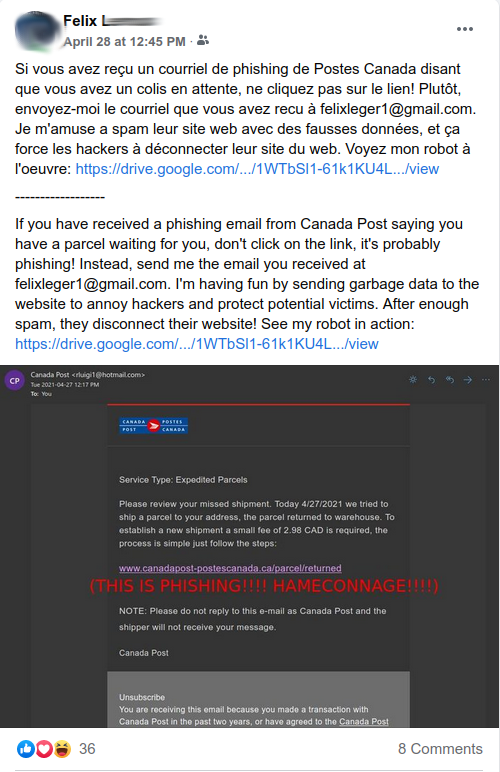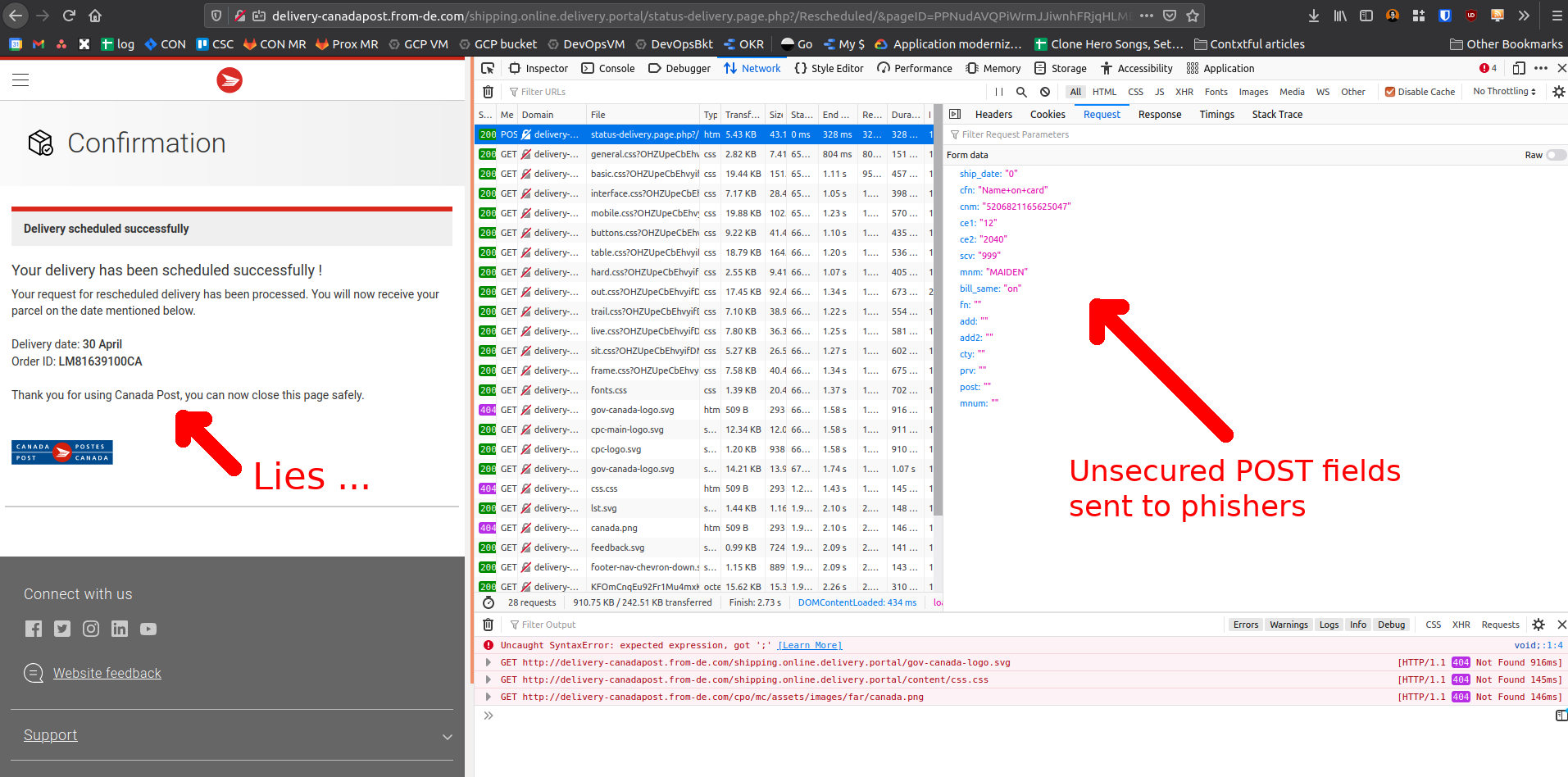2 minutes
Spamming a Phishing Campaign



I liked learning about the Faker library in Python to generate my fake data:
FAKE = {
"name": randomize_capitalization(fake.name()),
"address" : str(random.randint(1,9999)) + " " + fake.street_name(),
"phone" : fake.phone_number(),
"day_birth" : random.choice([str(i).zfill(2) for i in range(1,32)]),
"month_birth" : random.choice([str(i).zfill(2) for i in range(1,13)]),
"year_birth" : random.choice([str(i) for i in range(1910,2011)]),
"credit_card" : fake.credit_card_number(),
"security_code" : fake.credit_card_security_code(),
"maiden_name" : randomize_capitalization(fake.last_name()),
"expiry_month" : random.choice([str(i).zfill(2) for i in range(1,13)]),
"expiry_year" : random.choice([str(i).zfill(2) for i in range(2021,2041)]),
}
See the full code here
I let it run for a night, and the link from the initial phishing email stopped working. I didn’t know if I was IP banned, or if the domain was changed, but it felt as though it was happening as a reaction to my spam.
Asking my friends, I started finding new domains I could spam with the same robot. I was happy to see that most of my friends had received the previous, broken phishing link. This means they were relatively safe from potential harm! woohoo!
I started working with my friend Mathieu and, after realizing that we could POST directly to the hacker URL instead of using Selenium, we managed to make the robot 50 times faster. The amount of spam generated was getting pretty serious!
This is still a work in progress, but this hopefully shows an example of ethical hacking: spamming a phishing website for the good of the community. If you want to do this, remember to always use a VPN!
252 Words
2021-05-03 00:50